

others
ECB expected to keep interest rates unchanged, hint at cut in June – Crypto News
- The European Central Bank will likely maintain rates on hold once again.
- ECB President Christine Lagarde could change its cautious tone and hint at an upcoming rate cut.
- US CPI was hotter than anticipated in March, triggering risk aversion.
- EUR/USD bearish case gains momentum as the pair stands below 1.0800.
The European Central Bank (ECB) will announce its monetary policy decision on Thursday. Market participants anticipate no changes to the current policy, but policymakers continue paving the way towards interest rate cuts in June. The ECB has tightened rates to fight skyrocketing inflation in the pandemic aftermath, lifting the Main Refinancing Operations Rate to 4.50% and the Deposit Facility Rate to 4% from negative levels in little over a year.
Beyond rates, the ECB is using other tools: the Asset Purchase Programme (APP) and the Pandemic Emergency Purchase Programme (PEPP). The first one is being reduced methodically and predictably as the Eurosystem ceases reinvestments from maturing securities. Regarding the PEPP, the central bank planned to reduce the portfolio by an average of €7.5 billion per month beginning in the latter half of 2024 and cease reinvestments under the PEPP by the close of 2024. No changes are expected there either in the April meeting.
European Central Bank interest rate decision: What to know in markets on Thursday
Major central banks kept rates steady in the first quarter of 2024, claiming they would need more data before reverting their current restrictive monetary policies. Overall, policymakers converge in interest rates having reached cycle peaks.
The United States (US) Federal Reserve (Fed) foresaw three rate cuts in 2024 in its December Summary of Economic Projections (SEP), and repeated it in the March document. However, recent comments from Chairman Jerome Powell cooled down expectations, as he said policymakers are in no rush to trim rates.
At this point, the ECB is likely to trim rates before the Fed, which would be quite notable and could put pressure on the EUR/USD pair.
The latest Hamburg Commercial Bank (HCOB) and S&P Global surveys delivered a positive surprise in the Eurozone as March Composite PMIs showed business activity expanded for the first time in over a year.
In the March meeting, the ECB projected headline inflation should fall from 5.4% in 2023 to 2.3% in 2024 and then to 2.0% in 2025, reaching 1.9% in 2026. At the same time, policymakers expect that real GDP should increase by 0.6% in 2024, by 1.5% in 2025 and by 1.6% in 2026.
The US published the March Consumer Price Index (CPI) on Wednesday, which was higher than anticipated, sending financial markets into a risk-averse spiral. The US Dollar soared, while stocks collapsed, as the figures gave the Fed plenty of time before trimming interest rates.
The EUR/USD pair heads into the ECB announcement gaining bearish momentum and trading well below the 1.0800 threshold.
What to expect from the ECB meeting and how could it impact EUR/USD?
The ECB is expected to keep the three main interest rates unchanged. In March, the central bank announced that “the interest rate on the main refinancing operations and the interest rates on the marginal lending facility and the deposit facility will remain unchanged at 4.50%, 4.75% and 4.00%, respectively.” The statement also reiterated that local policymakers aim to keep rates at current levels for as long as necessary and that decisions will be made based on data.
European policymakers have come a long way since their December meeting, when President Christine Lagarde’s efforts were on pushing back against rate cuts expectations. In these last three months, however, multiple policymakers have sounded much more optimistic about trimming rates as soon as June. The ECB seems more convinced than the Fed about the need to revert the current monetary policy.
Furthermore, macroeconomic data has reinforced market expectations for a rate cut, with money markets currently pricing in a cut for June, betting on 90 basis points (bps) of cuts by December and a total of 150 bps by September 2025.
Eurozone inflation slowed to 2.4% in March, according to preliminary data from Eurostat, better than expected. The core inflation rate, which excludes energy, food, alcohol and tobacco prices, also cooled to 2.9% from 3.1% in February, further boosting the odds for an upcoming rate cut.
If the ECB keeps rates on hold as expected, the focus will be on President Christine Lagarde’s press conference following the announcement. Lagarde has been cautious with her words, emphasizing the need to maintain rates higher for longer at the risk of price pressures resuming the advance and that policymakers are data-dependent. But if officials are actually thinking about a rate cut in June, they would need to pave the way for it in this meeting.
The Euro could appreciate as an initial reaction to the news, although rate cuts tend to weaken the currency. If the ECB trims rates before the Fed, EUR/USD should turn bearish. It may be a bit too early to consider that, but for sure, if Lagarde is more explicit on upcoming cuts, the market will react accordingly.
The EUR/USD pair plummeted with hotter-than-anticipated US inflation figures and has room to extend its slump. Valeria Bednarik, FXStreet Chief Analyst, notes: “Markets are all about central banks these days and the growing imbalances between the Fed and the ECB. The first one has not much to worry about, as inflation could be above the central bank’s goal, but is far from dramatic, while at the same time, the economy keeps growing at a healthy pace. The ECB, however, is still struggling to see economic growth, while inflation is closer to their around 2% target. There are growing chances the ECB could trim rates before the Fed, in which case, EUR/USD is just now kick-starting a bearish trend.”
Bednarik adds: “From a technical perspective, the daily chart supports additional slides, given that technical indicators retreated from their midlines and gained downward traction. Indicators head firmly south within negative levels, reflecting increased selling interest. At the same time, EUR/USD develops far below all its moving averages, with the 20 Simple Moving Average (SMA) accelerating south between the longer ones, also a sign of sellers taking over. Support comes at 1.0720 and 1.0685, while below the latter EUR/USD could test the 1.0600 mark. Near-term sellers are now aligned around 1.0800, while a firmer resistance level comes at 1.0870.”
Central banks FAQs
Central Banks have a key mandate which is making sure that there is price stability in a country or region. Economies are constantly facing inflation or deflation when prices for certain goods and services are fluctuating. Constant rising prices for the same goods means inflation, constant lowered prices for the same goods means deflation. It is the task of the central bank to keep the demand in line by tweaking its policy rate. For the biggest central banks like the US Federal Reserve (Fed), the European Central Bank (ECB) or the Bank of England (BoE), the mandate is to keep inflation close to 2%.
A central bank has one important tool at its disposal to get inflation higher or lower, and that is by tweaking its benchmark policy rate, commonly known as interest rate. On pre-communicated moments, the central bank will issue a statement with its policy rate and provide additional reasoning on why it is either remaining or changing (cutting or hiking) it. Local banks will adjust their savings and lending rates accordingly, which in turn will make it either harder or easier for people to earn on their savings or for companies to take out loans and make investments in their businesses. When the central bank hikes interest rates substantially, this is called monetary tightening. When it is cutting its benchmark rate, it is called monetary easing.
A central bank is often politically independent. Members of the central bank policy board are passing through a series of panels and hearings before being appointed to a policy board seat. Each member in that board often has a certain conviction on how the central bank should control inflation and the subsequent monetary policy. Members that want a very loose monetary policy, with low rates and cheap lending, to boost the economy substantially while being content to see inflation slightly above 2%, are called ‘doves’. Members that rather want to see higher rates to reward savings and want to keep a lit on inflation at all time are called ‘hawks’ and will not rest until inflation is at or just below 2%.
Normally, there is a chairman or president who leads each meeting, needs to create a consensus between the hawks or doves and has his or her final say when it would come down to a vote split to avoid a 50-50 tie on whether the current policy should be adjusted. The chairman will deliver speeches which often can be followed live, where the current monetary stance and outlook is being communicated. A central bank will try to push forward its monetary policy without triggering violent swings in rates, equities, or its currency. All members of the central bank will channel their stance toward the markets in advance of a policy meeting event. A few days before a policy meeting takes place until the new policy has been communicated, members are forbidden to talk publicly. This is called the blackout period.
Inflation FAQs
Inflation measures the rise in the price of a representative basket of goods and services. Headline inflation is usually expressed as a percentage change on a month-on-month (MoM) and year-on-year (YoY) basis. Core inflation excludes more volatile elements such as food and fuel which can fluctuate because of geopolitical and seasonal factors. Core inflation is the figure economists focus on and is the level targeted by central banks, which are mandated to keep inflation at a manageable level, usually around 2%.
The Consumer Price Index (CPI) measures the change in prices of a basket of goods and services over a period of time. It is usually expressed as a percentage change on a month-on-month (MoM) and year-on-year (YoY) basis. Core CPI is the figure targeted by central banks as it excludes volatile food and fuel inputs. When Core CPI rises above 2% it usually results in higher interest rates and vice versa when it falls below 2%. Since higher interest rates are positive for a currency, higher inflation usually results in a stronger currency. The opposite is true when inflation falls.
Although it may seem counter-intuitive, high inflation in a country pushes up the value of its currency and vice versa for lower inflation. This is because the central bank will normally raise interest rates to combat the higher inflation, which attract more global capital inflows from investors looking for a lucrative place to park their money.
Formerly, Gold was the asset investors turned to in times of high inflation because it preserved its value, and whilst investors will often still buy Gold for its safe-haven properties in times of extreme market turmoil, this is not the case most of the time. This is because when inflation is high, central banks will put up interest rates to combat it. Higher interest rates are negative for Gold because they increase the opportunity-cost of holding Gold vis-a-vis an interest-bearing asset or placing the money in a cash deposit account. On the flipside, lower inflation tends to be positive for Gold as it brings interest rates down, making the bright metal a more viable investment alternative.
-

 Blockchain20 hours ago
Blockchain20 hours agoOn-Chain Tokenization for Payments Professionals – Crypto News
-
Cryptocurrency6 days ago
Pi Community Highlights Pi Coin’s Slow Growth As ‘Strategic’ – Crypto News
-
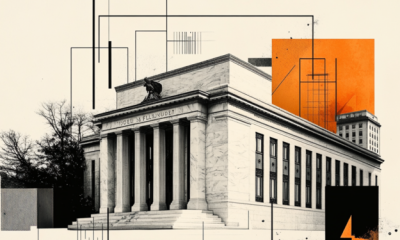
 others1 week ago
others1 week agoThere is more work to do on inflation – Crypto News
-

 Cryptocurrency1 week ago
Cryptocurrency1 week agoProfessor Coin: What’s Driving Cryptocurrency Adoption Around the World – Crypto News
-

 Blockchain1 week ago
Blockchain1 week agoCZ claps back against ‘baseless’ US plea deal allegations – Crypto News
-

 Technology1 week ago
Technology1 week agoApple ramps up India production amid China uncertainty, assembles $22 billion worth iPhones in a year – Crypto News
-
Business5 days ago
Cardano (ADA) and Dogecoin (DOGE) Eye For Bullish Recovery – Crypto News
-

 Business5 days ago
Business5 days agoWorldpay and FIS Deals Echo 2019’s Payments Megamergers – Crypto News
-
![Shiba Inu [SHIB] price prediction - A 70% rally next after 900%+ burn rate hike?](https://dripp.zone/news/wp-content/uploads/2025/04/Shiba-Inu-SHIB-price-prediction-A-70-rally-next-400x240.png)
![Shiba Inu [SHIB] price prediction - A 70% rally next after 900%+ burn rate hike?](https://dripp.zone/news/wp-content/uploads/2025/04/Shiba-Inu-SHIB-price-prediction-A-70-rally-next-80x80.png) Cryptocurrency1 week ago
Cryptocurrency1 week agoShiba Inu [SHIB] price prediction – A 70% rally next after 900%+ burn rate hike? – Crypto News
-

 others1 week ago
others1 week agoGold consolidates near all-time peak as bulls pause for breather – Crypto News
-
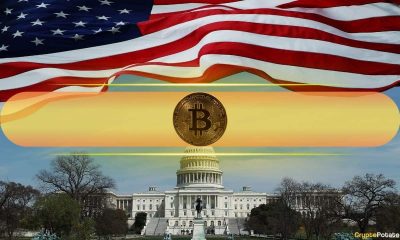
 Cryptocurrency7 days ago
Cryptocurrency7 days agoWhite House Mulls Bitcoin Reserve Backed by Gold and Tariffs – Crypto News
-

 Cryptocurrency5 days ago
Cryptocurrency5 days agoOKX Returns to US Market Following $505M DOJ Deal – Crypto News
-
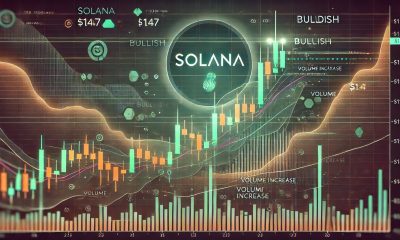
 Blockchain5 days ago
Blockchain5 days agoSolana Turns Bullish On 8H Chart – Break Above $147 Could Confirm New Trend – Crypto News
-

 Blockchain1 week ago
Blockchain1 week agoXRP Price To Hit $45? Here’s What Happens If It Mimics 2017 And 2021 Rallies – Crypto News
-
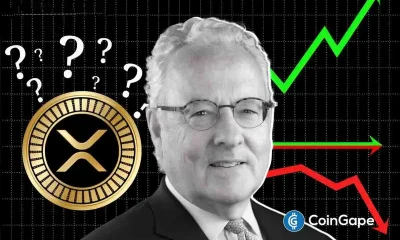
 others1 week ago
others1 week agoRipple Community Remains Disappointed With Hinman Report, What’s Next? – Crypto News
-

 Metaverse1 week ago
Metaverse1 week agoForget DeepSeek. Large language models are getting cheaper still – Crypto News
-

 others1 week ago
others1 week agoCrypto Strategist Sees Solana-Based Memecoin Surging Higher, Says One AI Altcoin Flashing Strong Chart – Crypto News
-
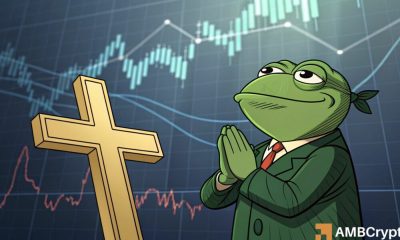
 Cryptocurrency1 week ago
Cryptocurrency1 week agoPepe is on the verge breakout to $0.0000078 as gold cross nears. – Crypto News
-

 Blockchain5 days ago
Blockchain5 days agoBitcoin online chatter flips bullish as price chops at $85K: Santiment – Crypto News
-
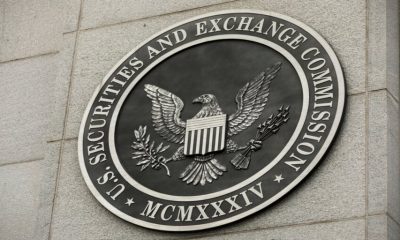
 Cryptocurrency5 days ago
Cryptocurrency5 days agoJudge Pauses 18-State Lawsuit Against SEC, Saying It Could ‘Potentially Be Resolved’ – Crypto News
-
Business5 days ago
Coinbase Reveals Efforts To Make Its Solana Infrastructure Faster, Here’s All – Crypto News
-
Technology4 days ago
Expert Predicts Pi Network Price Volatility After Shady Activity On Banxa – Crypto News
-

 Technology1 week ago
Technology1 week agoHow to transcribe and translate YouTube videos for free using Gemini 2.5 Pro? Check our step-by-step guide – Crypto News
-

 Cryptocurrency1 week ago
Cryptocurrency1 week agoFusaka fork takes shape as Pectra enters final stretch – Crypto News
-

 others1 week ago
others1 week agoBinance Issues Important Update On 10 Crypto, Here’s All – Crypto News
-

 Cryptocurrency1 week ago
Cryptocurrency1 week agoBitcoin – Here’s what’s next after sellers near exhaustion levels – Crypto News
-

 others1 week ago
others1 week agoOn-Chain Indicator Suggests Ethereum (ETH) Could Be Undervalued, According to Crypto Analyst – Crypto News
-

 others1 week ago
others1 week agoMexican Peso ends week strong as USD plunges on China tariff retaliation – Crypto News
-

 Blockchain1 week ago
Blockchain1 week agoOn-Chain Clues Suggest Bitcoin Bounce Might Be a False Signal—Here’s What to Know – Crypto News
-

 others1 week ago
others1 week agoChina’s Copper imports drop – ING – Crypto News
-
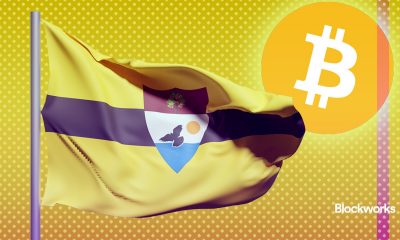
 Cryptocurrency6 days ago
Cryptocurrency6 days agoA decade in, Liberland needs the Bitcoin standard more than ever – Crypto News
-

 Technology5 days ago
Technology5 days agoIndia, Australia explore bilateral data-sharing treaty to tackle cybercrime – Crypto News
-

 Technology5 days ago
Technology5 days agoMoto Book 60 laptop, Pad 60 Pro launched in India: Price, features, battery and more – Crypto News
-
Technology5 days ago
Coinbase Reveals Efforts To Make Its Solana Infrastructure Faster, Here’s All – Crypto News
-
others5 days ago
Coinbase Reveals Efforts To Make Its Solana Infrastructure Faster, Here’s All – Crypto News
-
others4 days ago
How High Should Dogecoin Price Rise to Turn $10K to $100K? – Crypto News
-

 Technology1 week ago
Technology1 week agoPrice drop on 43 inch TVs: Grab the best deals on Samsung, Sony, Xiaomi and more, up to 57% off – Crypto News
-
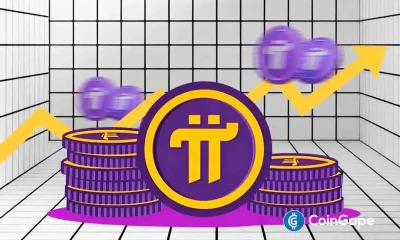
 Technology1 week ago
Technology1 week ago3 Altcoins to Buy as US Senate Banking Chair Gives August Deadline For Major Crypto Bills – Crypto News
-
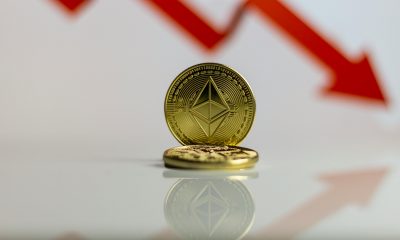
 Blockchain1 week ago
Blockchain1 week agoBoosting Ethereum: Bankless Cofounder Lays Out New Vision For Price Surge – Crypto News
-
![Bearish sequence in Nifty favors downside [Video]](https://dripp.zone/news/wp-content/uploads/2025/02/Bearish-sequence-in-Nifty-favors-downside-Video-Crypto-News-400x240.png)
![Bearish sequence in Nifty favors downside [Video]](https://dripp.zone/news/wp-content/uploads/2025/02/Bearish-sequence-in-Nifty-favors-downside-Video-Crypto-News-80x80.png) others1 week ago
others1 week agoDow Jones recovers ground to post one of its best weeks in years – Crypto News
-

 Cryptocurrency1 week ago
Cryptocurrency1 week agoScottish School Will Accept Bitcoin Payments, May Launch BTC Reserve – Crypto News
-

 Blockchain1 week ago
Blockchain1 week ago‘Bitcoin Standard’ author to develop Austrian economics curriculum for UK school – Crypto News
-
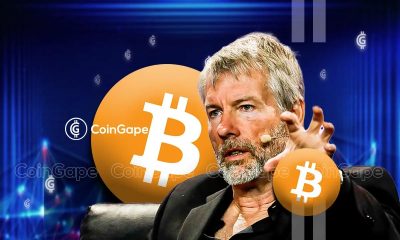
 Business1 week ago
Business1 week agoMichael Saylor Hints At Another MicroStrategy Bitcoin Purchase, BTC Price To Rally? – Crypto News
-
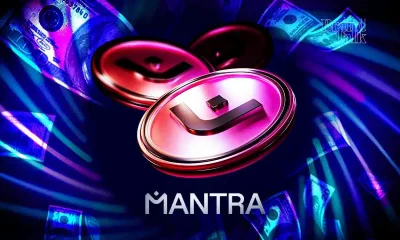
 others1 week ago
others1 week agoMantra Team Responds As The OM Token Price Crashes Over 80% In 24 Hours – Crypto News
-

 others1 week ago
others1 week agoUSD/CAD falls toward 1.3850 due to potential US recession, persistent inflation – Crypto News
-

 Blockchain1 week ago
Blockchain1 week agoCrypto markets ‘relatively orderly’ despite Trump tariff chaos: NYDIG – Crypto News
-

 others6 days ago
others6 days agoPresident Trump Planning Launch of New Monopoly-Inspired Crypto Game: Report – Crypto News
-
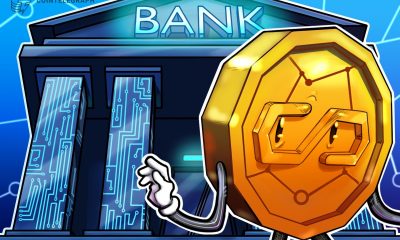
 Blockchain6 days ago
Blockchain6 days agoStablecoins’ dominance due to limitations of US banking — Jerald David – Crypto News
-

 Cryptocurrency5 days ago
Cryptocurrency5 days agoSOL remains bullish amid broader market stagnation – Crypto News
-
Business5 days ago
Crypto Whales Bag $20M In AAVE & UNI, Are DeFi Tokens Eyeing Price Rally? – Crypto News












